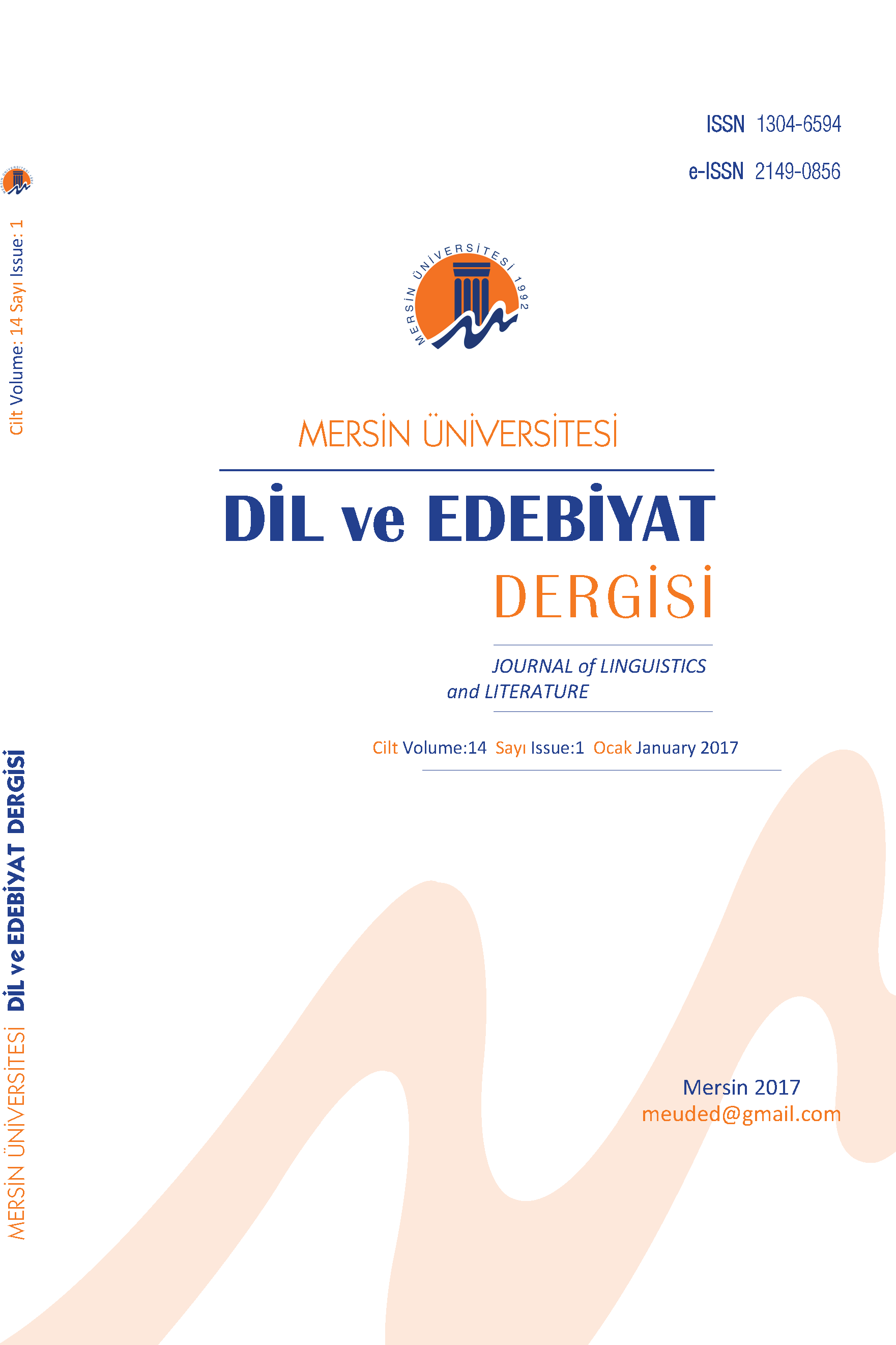AMAN ÜNLEMİ ÜZERİNE DERLEM TEMELLİ BİR ANLAMBİLİM VE EDİMBİLİM ÇALIŞMASI
Aman ünlemi, Derlem, Sözcük profili, Eşdizimlilik, Anlam tercihi, Söylem ezgisi
A Corpus-based Semantics and Pragmatics Study on the Interjection Aman
Interjection Aman, Corpus, Lexical profile, Collocation, Semantic preference, Discourse prosody,
___
- Aksan, Y., Aksan, M., Koltuksuz, A., Sezer, T., Mersinli, Ü., Demirhan, U. U., Yılmazer, H., Atasoy, G., Öz, S., Yıldız, İ. ve Kurtoğlu, Ö. (2012). Construction of the Turkish National Corpus (TNC). Calzolari, N., Choukri, K., Declerck, T., Doğan, M. U., Maegaard, B., Miriani, J., Odijk, J. ve Piperidis, S. (Yay. haz.) içinde, Proceedings of the Eight International Conference on Language Resources and Evaluation (LREC 2012). İstanbul, Türkiye. http://www.lrec-conf.org/proceedings/lrec2012/papers.html.
- Aman (t.y.) Türk Dil Kurumu Güncel Türkçe Sözlük içinde. Erişim adresi: https://sozluk.gov.tr/
- Böler, T. (2006). Türkçe Sözlük (TDK) ile örnekleriyle Türkçe Sözlük’ü (MEB) Karşılaştırma Denemesi. Sosyal Bilimler Araştırmaları Dergisi, 1(1), 101-118.
- Firth, J. R. (1957). Papers in Linguistics 1934-1951.Oxford University Press.
- Halliday, M. A. K. (1966). Lexis as a linguistic level. C. E. Bazell, J. C. Catford, M.
- Halliday, A. K., & R. H. Robins (Yay. Haz.) içinde, In Memory of J.R..Firth. Longman, 148-162.
- Külebi, O. (1990). Türkçe ünlemlerin Kullanımbilim (Pragmatics) yönünden incelenmesi. Dilbilim Araştırmaları, 1, 10-34.
- Lindquist, H. (2009). Corpus Linguistics and the Description of English. Edinburg: Edinburgh University Press.
- McEnery, T. and A. Hardie (2012). Corpus linguistics. CUP.
- Sinclair, J. (1991). Corpus, concordance, collocation. Oxford University Press.
- Sinclair, J. (1998). The lexical item. Weigand E. içinde, Contrastive Lexical Semantics, 1–24. John Benjamins. doi: 10.1075/cilt.171.02sin
- Stewart, D. (2010). Semantic prosody: A critical evaluation. Routledge.
- Stubbs, M. (2001). Texts, Corpora, and Problems of Interpretation: a Response to Widdowson. Applied Linguistics. 22, 149–172.
- Stubbs, M. (2002). Words and phrases. Blackwell.
- Uzun, L. (1999), 1945’ten bu yana Türkçe Sözlükler, Kebikeç 7-8, 53-57.
- ISSN: 1304-6594
- Yayın Aralığı: Yılda 2 Sayı
- Başlangıç: 2004
- Yayıncı: Mersin Üniversitesi
TÜRKÇEDE EYLEMLERİN DERLEM-TEMELLİ DEĞERLİK SÖZLÜĞÜNÜN OLUŞTURULMASI: YÖNTEMBİLİMSEL BİR ÇALIŞMA
Umut Ufuk DEMİRHAN, Mustafa AKSAN
ÇIKARIM BECERİSİNİN DEĞERLENDİRİLMESİ: OKUDUĞUNU ANLAMA DÜZLEMİ İÇİN BİR ÖLÇME ARACI
AMAN ÜNLEMİ ÜZERİNE DERLEM TEMELLİ BİR ANLAMBİLİM VE EDİMBİLİM ÇALIŞMASI
